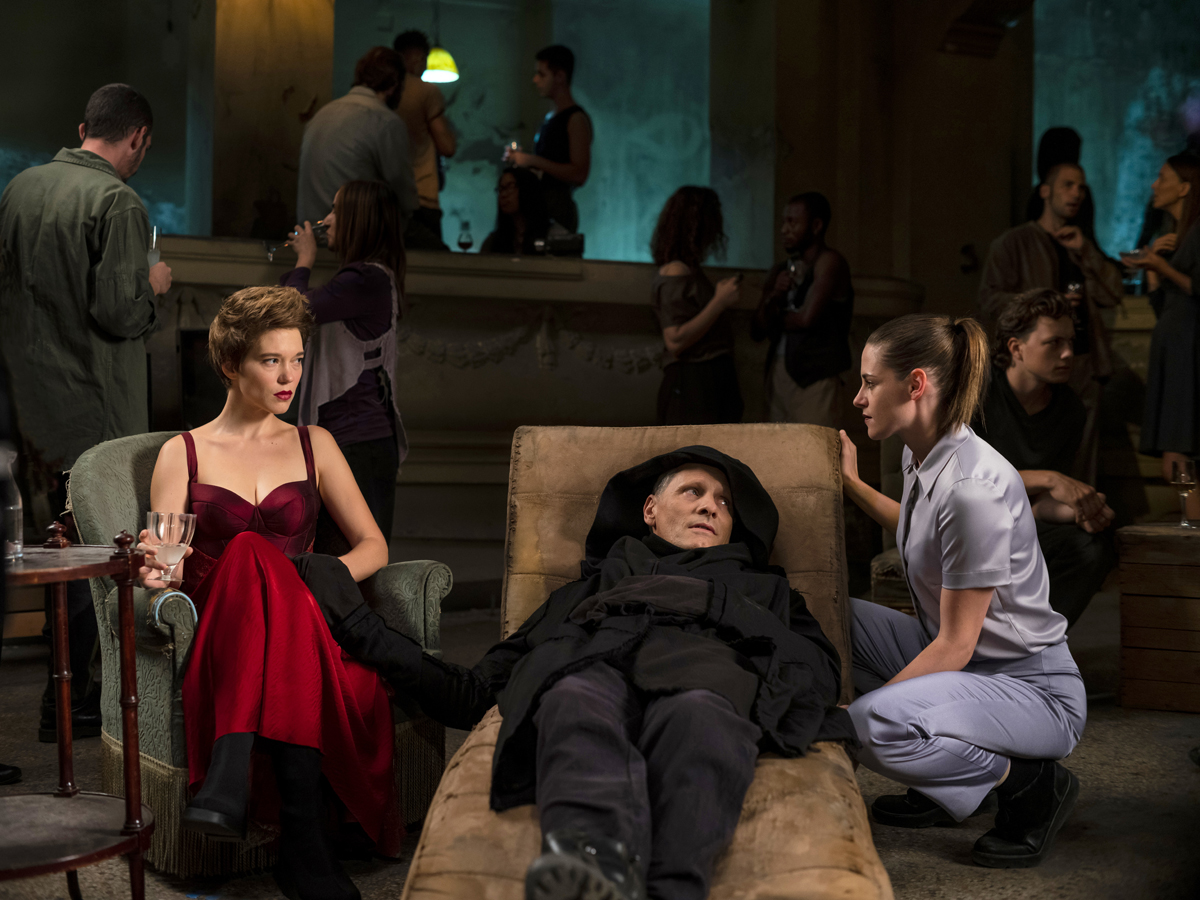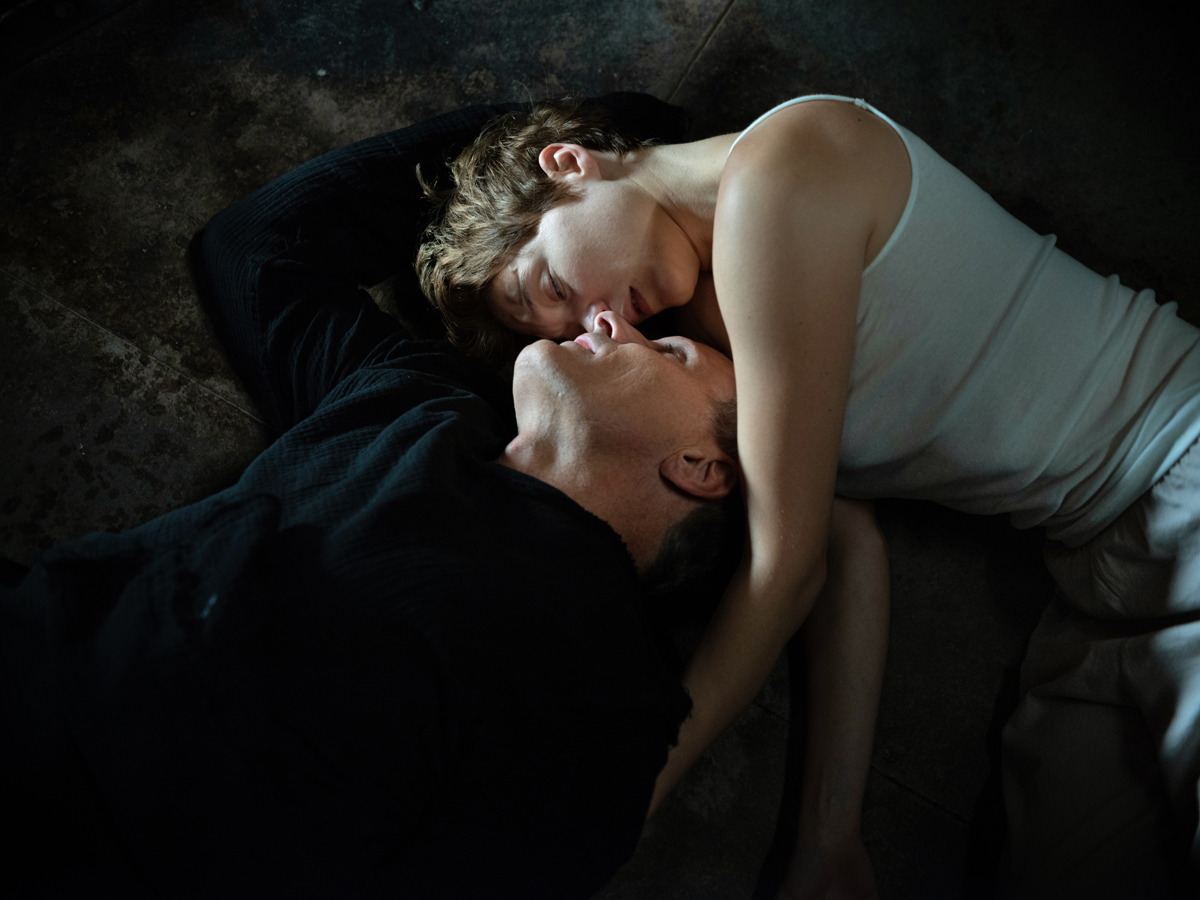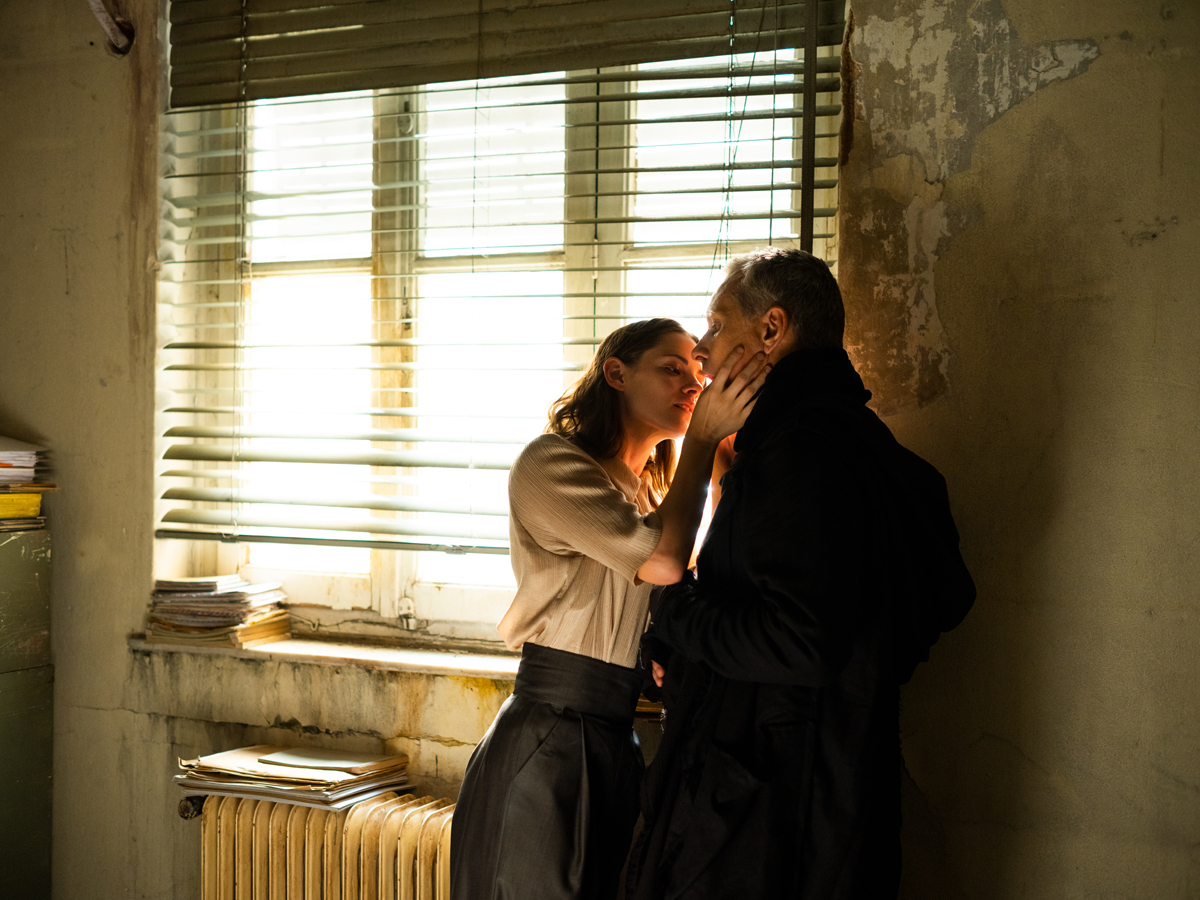 Melissa Anderson
Melissa Anderson
Mortification of the freaky flesh: in David Cronenberg’s latest, a return to the goopy horrors of the body.

Léa Seydoux as Caprice, Viggo Mortensen as Saul Tenser, and Kristen Stewart as Timlin in Crimes of the Future. Courtesy Neon.
Crimes of the Future, written and directed by David Cronenberg,
now playing in theaters
• • •
Crimes of the Future recycles the past. David Cronenberg’s new film repurposes the title of his second feature, from 1970. The movie just released isn’t a remake, though it continues the director’s defining motif, abundantly evidenced in the first Crimes of the Future: speculative fiction merging with corporeal horror, the human body rendered as a viscous terrain to be pricked, probed, breached.
Yet Cronenberg largely abandoned these freaky, fleshy preoccupations after eXistenZ (1999), in which Allegra, the designer of a diabolical VR diversion who is played by Jennifer Jason Leigh, convinces Jude Law’s tech-phobic Ted to succumb to her game’s most gruesome demand: surgical penetration at the base of the spine, a crude operation that creates an orifice into which an umbilical “bio-port”—and later, Allegra’s tongue—can be inserted. Cronenberg’s first film since 2014’s acidic Hollywood satire Maps to the Stars, Crimes of the Future is also the first since eXistenZ to feature an original screenplay by the director. Like eXistenZ, Cronenberg’s latest, which was shot in Greece, takes place in an unspecified, dystopic epoch—one that seems imminent. But unlike that in the ’99 movie, the gap between reality and what-if in Crimes of the Future is now vanishingly small.

Viggo Mortensen as Saul Tenser and Léa Seydoux as Caprice in Crimes of the Future. Courtesy Neon.
Following a prologue punctuated by a capsized boat in shallow waters and a filicide—both signals of societal collapse—the film takes us into the grotty live-work space of Saul Tenser (Viggo Mortensen) and Caprice (Léa Seydoux), his creative and romantic partner. Manifesting an alarming case of “accelerated evolution syndrome,” Saul develops “neo-organs” in his body, growths that Caprice, a former trauma surgeon, removes and tattoos in their extreme body-art exhibitions. (Curiously, despite his supernumerary innards, he has no eyebrows.) Had Marina Abramović and Ulay devoted their performances solely to the subcutaneous, their works might have looked something like Saul and Caprice’s: supine in a hygge sarcophagus known as a Sark, he submits to her scalpel, which she, bedecked in formal evening wear, manipulates via a globby, ranine joystick. Rapt, fans watch and record as Saul’s bodily parts are extracted, an operation to which he responds with near-orgasmic pleasure.

Viggo Mortensen as Saul Tenser in Crimes of the Future. Courtesy Neon.
Owing to his metastatic capabilities, Saul, typically outfitted in pestilent medieval chic—black hooded monk’s robe and matching face covering—and Caprice frequently visit the National Organ Registry. That paper-strewn office—is it analog only?—is overseen by investigators Wippet (Don McKellar), prone to dumb puns (“No crime like the present!”), and Timlin (Kristen Stewart), a twitchy bureaucrat besotted with Saul. (The appellations in Crimes seem to have been created by a Lewis Carroll name generator—an example of Cronenberg’s hit-or-miss humor. For every dopey play on words, there’s a genuinely funny bit, such as a request for Saul to enter an “inner-beauty pageant.”)

Kristen Stewart as Timlin and Viggo Mortensen as Saul Tenser in Crimes of the Future. Courtesy Neon.
It is Timlin who utters what has already become the film’s slogan: “Surgery is the new sex,” likely to overtake “Long live the new flesh,” the words that conclude Videodrome (1983), as the signature Cronenbergian catchphrase. But is everything old new again? During their nighttime peregrinations through side streets and back alleys, Saul and Caprice more than once encounter a bit of knife play: usually a lone woman writhing in ecstasy as a man (or men) draws blood from a thigh or arm with a blade. That tableau wouldn’t have warranted more than a passing glance at a Ron Athey show thirty years ago.

Scott Speedman as Lang Dotrice in Crimes of the Future. Courtesy Neon.
Later in the film, Caprice decides to undergo the scalpel herself for a makeover, reemerging with a neat row of crescent moons on her forehead—body modification not all that outré in an era, which can be traced back to at least the turn of the millennium, of multiple piercings and ink covering nearly every inch of epidermis. When Caprice and Saul eventually acquiesce to the wishes of Lang Dotrice (Scott Speedman)—the head of a guerrilla group advancing another strain of evolutionary mayhem—to perform a public, gallery-gala autopsy on the corpse of his eight-year-old son, the ethical qualms Caprice initially expressed seem impossibly quaint, if only to an American spectator, who awakens nearly every day to fresh reports of slaughtered children. (I saw Crimes of the Future just a few hours before the news of the Uvalde massacre broke.)
The Barbara Kruger–esque pronouncement “BODY IS REALITY” flashes on TV monitors before one of Saul and Caprice’s macabre extravaganzas. That statement is borne out touchingly—and perhaps inadvertently—during a fleeting moment when we are reminded that even the most beautiful physiques are not immune to time’s natural erosion. As Caprice lies naked in bed, we see the faint trace of stretch marks on Seydoux’s breasts. Whether intentional or not, these potent few seconds puncture Cronenberg’s science fiction, Seydoux’s striae serving as an index of the inevitable modifications of a very real body, among the world’s most famous, that of a James Bond heroine and a Louis Vuitton brand ambassador.

Kristen Stewart as Timlin and Léa Seydoux as Caprice in Crimes of the Future. Courtesy Neon.
And although it is Mortensen’s character who is outwardly—or inwardly—the most fragile, Seydoux imbues Caprice with a vulnerability that gives this animatronic film a desperately needed pulse. Performers in Cronenberg’s movies, especially those in his body-horror features, often seem to be acting at a remove: either they’re too mechanical and detached or they lard their performances with an abundance of tics. That’s certainly the case with Mortensen, here in his fourth collaboration with the director. He speaks in a curious raspy rumble, gurgling observations about his Orchid Bed—another of Crimes’ H. R. Giger–like appurtenances—not sufficiently anticipating his pain. Stewart, in her inaugural film with Cronenberg, delivers her lines in a strange staccato rat-a-tat, an odd rhythm that repels the viewer further from the spell the film is trying to cast.
But Seydoux tethers us to Crimes’ shifting ground. Many of the film’s plot strands don’t quite knit together—a pair of technicians played by Tanaya Beatty and Nadia Litz seem to have walked off a revival of Cirque du Soleil’s Zumanity—and the sacralized spectacle of Caprice and Saul’s performances never seems less than absurd. Weepy, devoutly in love with Saul, Caprice leaks: tears, blood, desire, fears, hopes. Her emissions send a clear message: long live the old flesh.
Melissa Anderson is the film editor of 4Columns. Her book on David Lynch’s Inland Empire is available from Fireflies Press as part of its Decadent Editions series.